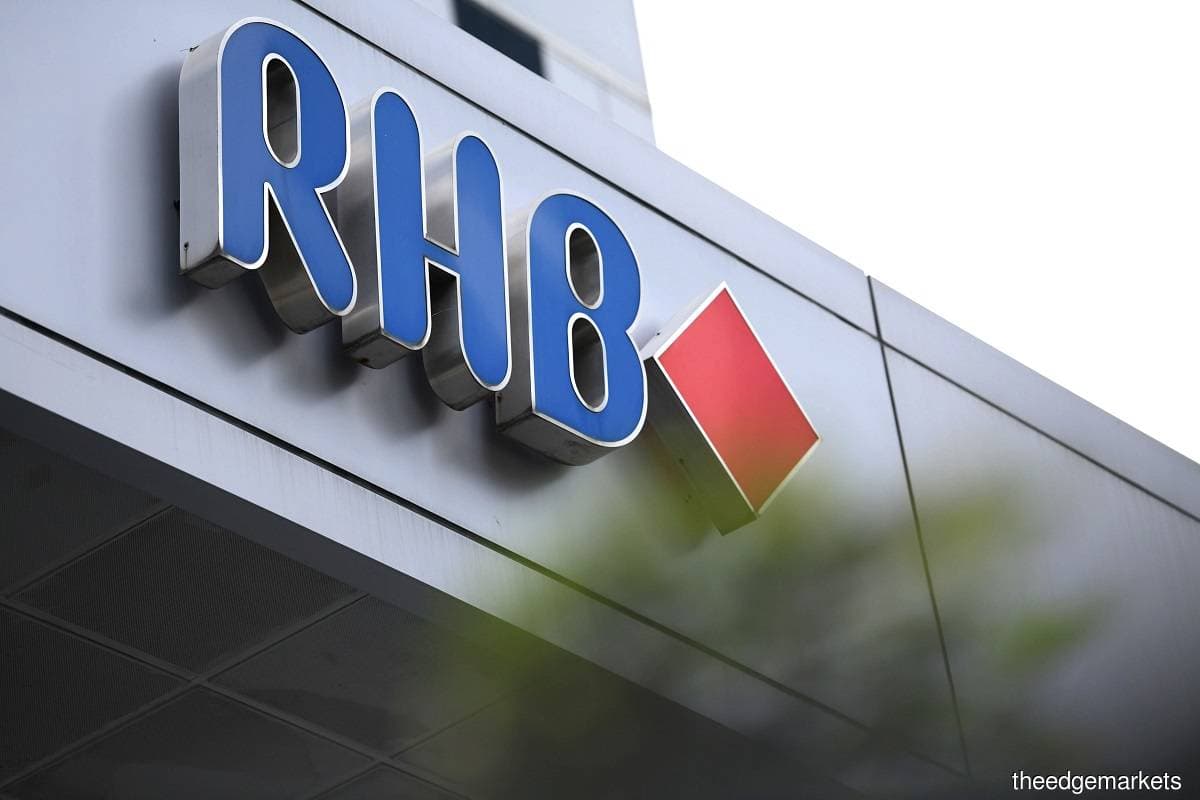
KUALA LUMPUR (Aug 27): RHB Bank Bhd's net profit grew to RM701.34 million for the second quarter ended June 30, 2021 (2QFY21) from RM400.77 million a year ago.
However, the banking group's revenue dropped 10.2% to RM2.93 billion from RM3.25 billion in 2QFY20. Earnings per share (EPS) ballooned to 17.49 sen against 9.99 sen last year.
RHB declared an interim dividend of 15 sen per share, with a cash payout of five sen per share, and an electable portion under dividend reinvestment plan of 10 sen per share.
For the cumulative six months ended June 30, 2021 (1HFY21), its net profit increased 39% to RM1.35 billion due to75 higher net fund based income and lower net modification loss. EPS for the six-month period expanded to 33.71 sen from 24.23 sen a year ago.
Cumulative revenue was down by nearly 10% to RM5.83 billion in 1HFY21 from RM6.47 billion a year ago.
"The group will continue to exercise prudence in loan loss provisioning and closely monitor asset quality while being watchful of emerging risks and the ongoing headwinds in the markets.
"We will stay the course by focusing on delivering customer centric solutions, accelerating digital payment and digital enablement domestically and regionally," said RHB group managing director Datuk Khairussaleh Ramli in a press statement.
"This is reflected through continued innovations within our digital ecosystems, as well as the marked increase in our digital transactions from 76% in 2020 to 84% as at June 30, 2021," he added.
In a filing with Bursa today, RHB, the country's fourth largest banking group in terms of assets, said that the group's net fund based income improved to RM2.85 billion in 1HFY21 driven by proactive funding cost management, which declined 33.2% year-on-year (y-o-y) supported by current account savings account (CASA) growth of 10.8%.
Meanwhile, its non-fund based income fell 5.6% to RM1.12 billion in 1HFY21 from the previous year on lower net trading and investment income. The decline was partially offset by higher commercial banking, brokerage, capital market and wealth management fee income.
Balance sheet wise, RHB's common equity tier-1 (CET-1) ratio stood at 16.8% while its total capital ratio was at 19.3% as at June 30.
RHB's gross loans and financing went up by 5.7% y-o-y to RM191 billion in 1HFY21, largely driven by growth in mortgage, auto financing, SME segment and its Singapore segment. Domestic loans and financing made up the bulk at 4.1% y-o-y.
In terms of gross impaired loans, it amounted to RM3.1 billion as at June 30, with gross impaired loan ratio of 1.63% lower than the 1.87% (RM3.4 billion) seen as at June 30, 2020. The group's loan loss coverage ratio stood at 124.1% as at end-June 2021.
Notably, most of RHB's business segments posted increases in net profit for 1HFY21, with the exception of its group business banking.
RHB's group business banking saw its pre-tax profit decline 21.2% to RM155.7 million for 1HFY21, dragged down by higher allowances for credit losses on loans and higher operating expenses.
The impact was partially offset by higher net fund based income and non-fund based income.
The retail banking segment reported the highest increase in pre-tax profit for 1HFY21, up by 15.3% to RM540.9 million from a year ago. It attributed the gain to higher net fund based income and non-fund based income, and lower allowances for loans and financing, partially offset by higher operating expenses.
Meanwhile, group wholesale banking posted a 13.8% increase in pre-tax profit to RM1.15 billion and its group international business, excluding Singapore, registered a pre-tax profit of RM51.6 million compared with pre-tax profit of RM16.3 million in the corresponding year. The better earnings were mainly due to higher profitability in Cambodia and Thailand.
As for RHB Bank Singapore, it recorded a pre-tax profit that was 0.8% higher at S$6.1 million than a year ago, which the group attributed to higher net fund based income and non-fund based income, partially offset by higher expected credit losses on loans and higher operating expenses.